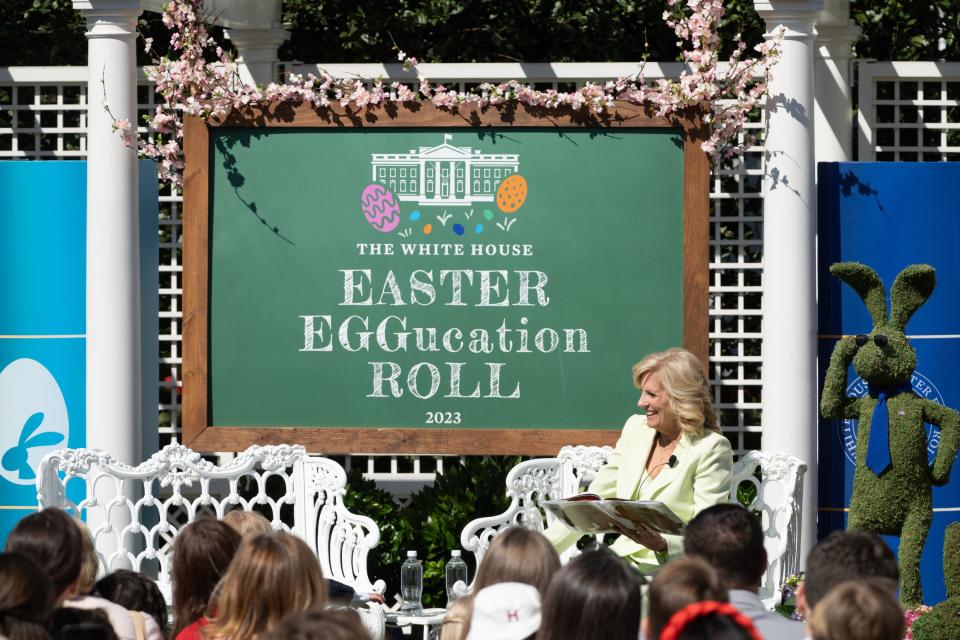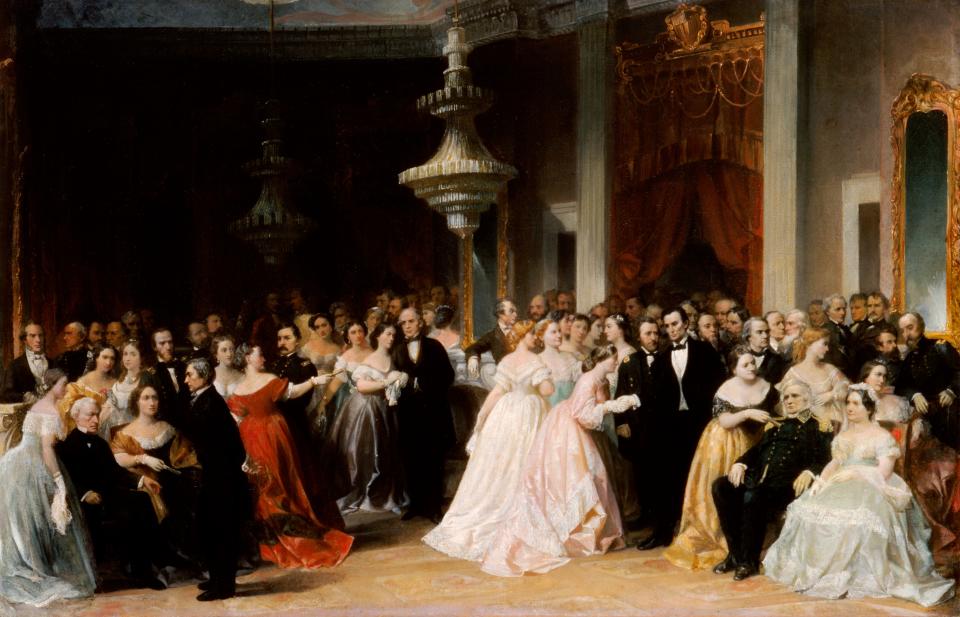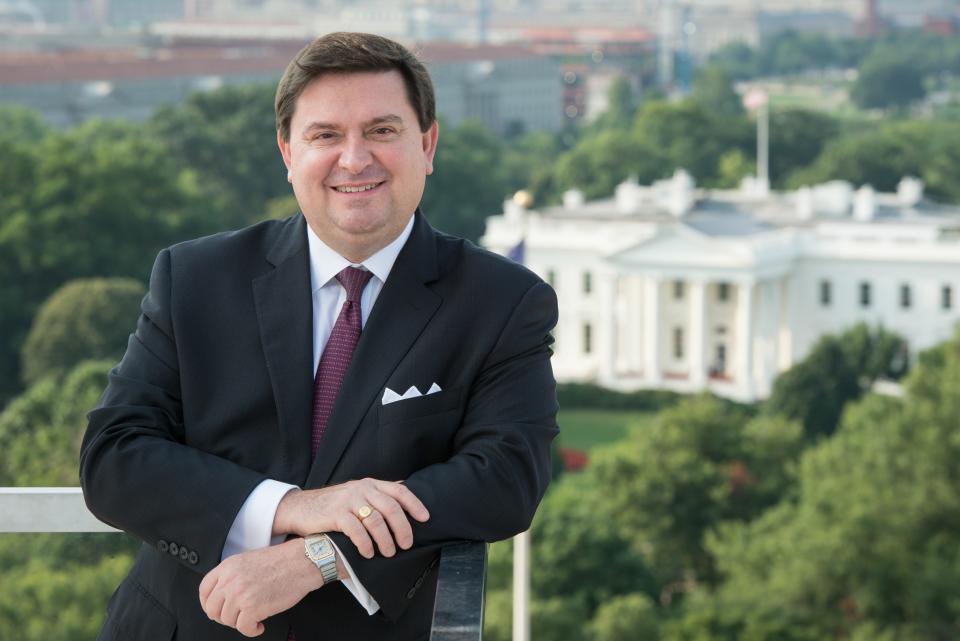It's back to school time in America. Are kids learning enough about civics?
- Oops!Something went wrong.Please try again later.
The annual return of students to school is a moment to think about the history they inherit as Americans – and our critical need to ensure that they are learning about our shared history so they can become the citizen history-makers our nation needs in the coming decades.
Education has always been a key to our national success, and it’s no accident that many of our presidents were also teachers and tutors, including John Adams, Millard Fillmore, James Garfield and Chester Arthur. Grover Cleveland taught at the New York Institute for the Blind – at age 16. At least 10 first ladies were teachers, including Pat Nixon, Laura Bush and Jill Biden.
These experiences can be pivotal. As a student at Southwest Texas State Teachers College, a young Lyndon Johnson taught at a tiny school near the U.S.-Mexico border – an experience that inspired efforts four decades later to educate young and disadvantaged school children.
“As a son of a tenant farmer, I know that education is the only valid passport from poverty,” said President Johnson at an education bill signing ceremony – accompanied by his first teacher, Kate Deadrich Loney, who taught Johnson in a one-room schoolhouse.
The White House itself becomes a schoolhouse when visiting students get to experience their country’s history firsthand. They pass among the halls that presidents have walked. They see architecture, furnishings and portraits from two centuries of the American story. Visits like these can bring history and civics to life.

My memories learning about the White House
I know, because I have vivid memories of my own inspirational fifth grade visit to Washington, experiencing and learning about the White House, the Capitol and the Supreme Court. To this day, on the wall of my Washington office is a framed photograph of our Rocky Ridge Elementary class on the Capitol lawn.
But our children need more than inspiring visits if we’re going to strengthen citizenship in America. The 2022 National Assessment of Educational Progress (often called “The Nation’s Report Card”) showed that only 22% of eighth graders are proficient in civics and 13% in U.S. history. These scores have been declining – and we will pay the price if we don’t turn around those scores.
As a teacher, I'm not surprised: Nation's Report Card shows kids don't know US history
There is nothing partisan about being a good citizen. Understanding our history and the fundamental principles of our country and government are as fundamental and learnable as our ABCs − if we follow sound principles, and take history and civics seriously as a nation.
That means quality history education for all − anchored in well-researched and verifiable truths about our nation’s unique founding and contributions to the world, our high ideals and core civic principles, the promises we’ve struggled to fulfill, and the diverse voices and experiences that have shaped our history. We need to help teachers provide every student with a critical core of historical knowledge, along with the critical thinking skills needed to put this knowledge to work shaping the history of their own times.
We must also help our schools encourage students to evaluate evidence, consider different perspectives, and to discuss and debate historical events and controversial topics − respectfully and in a balanced manner. They should be taught the awesome responsibilities of citizenship, and the equally awesome powers of civic engagement and community involvement.

Teaching our children about civics in a learning crisis
Investment in our teachers of history and civics is vital, including competitive salaries and professional development, and holding our schools accountable for the quality of history education that our children deserve.
Engaging technology, digital resources and games to make history education more engaging, accessible and fun should be commonplace. We need to connect our history to every part of life, including science, literature, the arts and even pop culture. No matter a student’s career interest, they should know the history of the pioneers who preceded them in that field.
Where past and present coexist: White House furniture is America's living history
Many terrific nonpartisan institutions and organizations are doing their part to turn our civics and history crisis around. The National Archives' “Civics for All of US” program puts U.S. government records to work to give students unmatched you-are-there information − up close and remotely − on the Constitution, the Bill of Rights, voting rights and representative government. Students learn how people just like them have engaged with the successes, failures, debates and challenges of every era of our history.
iCivics, founded by former Supreme Court Associate Justice Sandra Day O’Connor and a White House Historical Association partner, provides nonpartisan civic education resources to more than 9 million teachers, families and K-12 students each year. iCivics’ rich bank of assets includes curriculum resources, digital literacy tools and professional learning materials. They have developed more than a dozen online games to let kids play at being the president, argue Supreme Court cases, pass laws and even write the Constitution themselves.
Education is also critical to the mission of the White House Historical Association, where first lady Jackie Kennedy oversaw the publication of our first book on White House history in 1962. We’re proud to host the White House History Teacher Institute, a professional development program that since 2016 has offered more than 900 teachers, and more than 78,000 students they teach each year, the benefits of discussions with historians, local site visits and exchanges with colleagues.
Opinion alerts: Get columns from your favorite columnists + expert analysis on top issues, delivered straight to your device through the USA TODAY app. Don't have the app? Download it for free from your app store.
Tools available for teachers
In person or online, these teachers can immerse themselves in the history of the White House and how its changing structure, symbolism and local neighborhood reflect larger historical movements. They also learn the compelling stories of the people who have contributed to White House history – including presidents, first ladies and first families, but also those who built the house, maintain it and work behind the scenes.
Our website also offers adaptable and ready-to-use education materials for grades K-12 that tell important stories of United States history through the lens of the White House. Classroom resource packets draw from the our deep reservoir of images and information. Specially curated National History Day resources include project ideas, videos and topic-based compilations of images and articles.
We also produce a wealth of fun and engaging materials for our next generation of citizens – including a series of student-friendly videos created in partnership with Untold on little-known stories from White House history.
And we publish more than a dozen illustrated children’s books that teach kids about White House history, including a gingerbread White House pop-up book and titles written by Rocco Smirne, an elementary school student in Fairfax County, Virginia – and college student Gigi McBride, whose mother worked at the White House during her elementary school years.

There’s even a White House 360 Virtual Tour that lets students walk the halls of the White House, visit every public room on the ground and state floors, and get closer to objects than in-person visitors can, with educational materials to deepen their understanding of what they see.
Understanding our past is essential to knowing who we are – and who we can be. If we want to make history, we must understand it first.
Stewart D. McLaurin is a member of the USA TODAY Board of Contributors and president of the White House Historical Association, a private nonprofit, nonpartisan organization founded by first lady Jacqueline Kennedy in 1961 to privately fund maintaining the museum standard of the White House and to provide publications and programs on White House history.
You can read diverse opinions from our Board of Contributors and other writers on the Opinion front page, on Twitter @usatodayopinion and in our daily Opinion newsletter. To respond to a column, submit a comment to letters@usatoday.com.
This article originally appeared on USA TODAY: As kids go back to school, White House history offers lesson in civics

